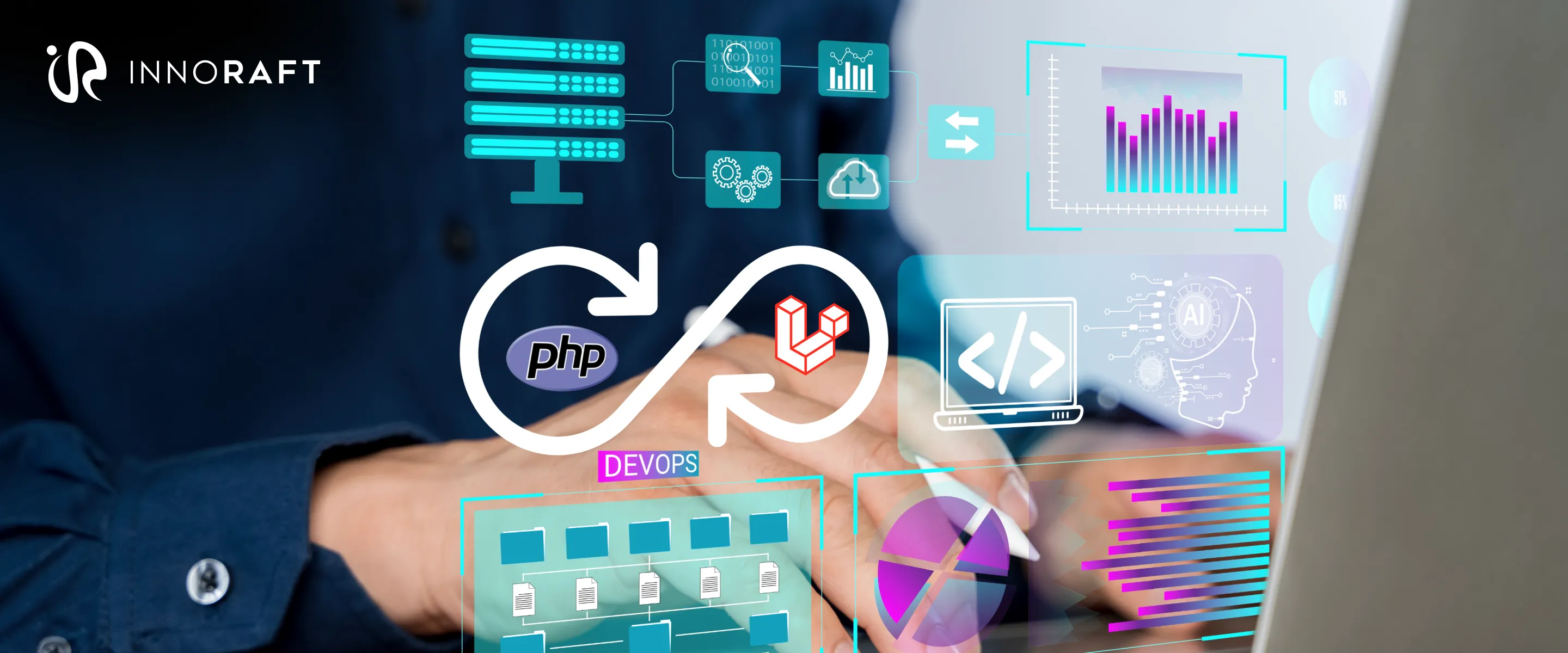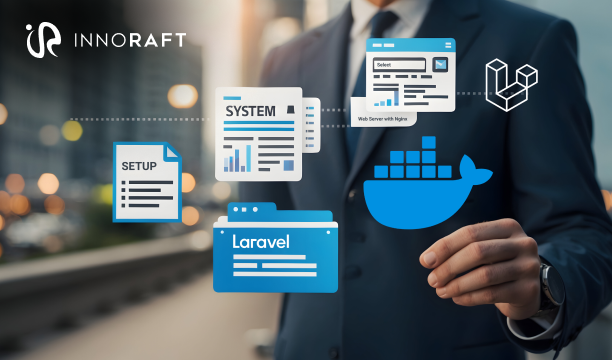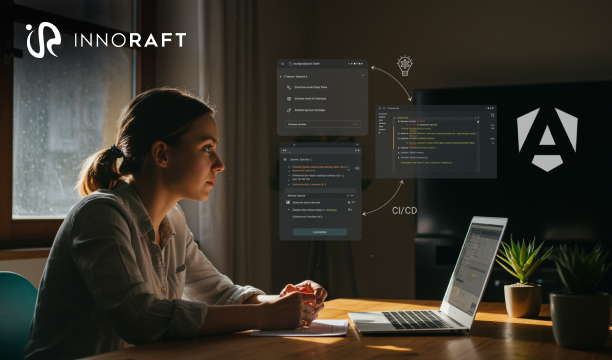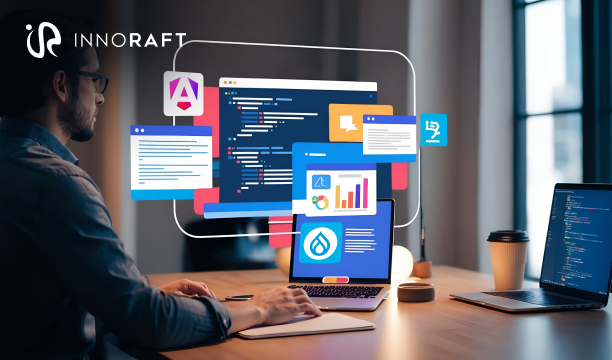In the realm of web development, optimizing for efficiency and reliability is paramount. For teams utilizing PHP and the Laravel framework, the integration of DevOps practices can be transformative. DevOps for PHP and Laravel surpasses mere jargon; it denotes a strategic methodology that bridges the gap between development and operations. This approach ensures more rapid, stable, and frequent software releases.
Specifically, applying PHP DevOps best practices to Laravel application development, deployment, and operation streamlines the entire software delivery lifecycle. From initial code creation to production, the focus is on automation, enriched collaboration, and constant improvement, showing a solid Laravel DevOps workflow.
DevOps: Transforming Laravel Development and Deployment
DevOps revolutionizes Laravel development and deployment by connecting software development with IT processes. It simplifies workflows, enhances collaboration, and combines automation through CI/CD practices.
The PHP and Laravel CI/CD pipeline acts like a continuous conveyor belt for Laravel projects, ensuring new code updates are rigorously tested, integrated, and swiftly moved into production. This process not only minimizes human mistakes and lowers downtime but is also key to effective Laravel performance optimization by ensuring that only optimized and tested code reaches the user. The pipeline enables teams to show features reliably, and the ultimate benefits include improved customer satisfaction and higher product quality.
If your organization has not yet implemented DevOps, you should consider doing so. Regardless of the factors holding you back, the advantages of DevOps are too significant to overlook.
Key Aspects of DevOps for PHP and Laravel projects
Continuous Integration (CI)
- Version Control: Utilizing Git for source code management to facilitate collaborative development and track changes.
- Automated Testing: Integrating testing frameworks such as PHPUnit for unit and feature testing, and potentially Laravel Dusk for browser testing, into the Continuous integration for PHP projects pipeline.
- Build Automation: Adding Composer for dependency management and tools like Gulp or Webpack for compiling frontend assets.
- CI Tools: Platforms like Jenkins, GitLab CI/CD, GitHub Actions, or Azure Pipelines build and test applications upon code commits, reinforcing the continuous integration for PHP projects.
Continuous Delivery/Deployment (CD) Strategies
- Deployment Automation: Streamline Laravel app deployments to staging and production with tools like Ansible, Capistrano, or custom scripts, automating deployment in Laravel.
- Containerization: Utilize Docker to bundle Laravel apps and their dependencies, ensuring constant environments across development and production.
- Orchestration: Manage and scale containerized Laravel applications in production using Kubernetes.
- Cloud Platforms: Utilize cloud services such as AWS, Azure, or Google Cloud Platform for hosting, scaling, and infrastructure management of Laravel applications, which is essential for successful continuous delivery in Laravel.
Monitoring and Logging
To maintain performance and quickly manage issues, consider these practices:
- Application Performance Monitoring (APM): Utilize DevOps tools for Laravel developers, such as New Relic, Datadog, or Sentry, to track application performance, identify bottlenecks, and errors.
- Centralized Logging: Consolidate logs from various components of your application and infrastructure using solutions like the ELK stack (Elasticsearch, Logstash, Kibana) or Splunk.
- Alerting: Configure alerts for critical issues and performance anomalies to facilitate proactive problem resolution.
Infrastructure as Code (IaC)
- Environment Provisioning: Utilize DevOps tools for Laravel developers, such as Terraform or CloudFormation, to define and manage infrastructure as code for PHP application components like servers, databases, and networking through code.
- Configuration Management: Automate server configurations and application deployments using tools like Ansible or Puppet.
- Containerization: Docker streamlines PHP and Laravel development by packaging applications and dependencies into consistent containers. For large-scale deployments, Kubernetes can orchestrate such containers, underpinning the shift toward infrastructure as code for PHP applications.
Security Integration
Security is an integral part of the Laravel DevOps workflow, not an afterthought.
- Automated Security Scanning: Integrate tools for SAST (Static Application Security Testing) and DAST (Dynamic Application Security Testing) into your PHP and Laravel CI/CD pipeline.
- Dependency Scanning: Regularly scan Composer dependencies for known vulnerabilities.
- Secret Management: Use DevOps tools for Laravel developers, like HashiCorp Vault or environment variables, for securely managing information such as API keys and database credentials.
There is a strong motivation to use frameworks when developing web applications, as they significantly reduce the time and effort compared to using plain PHP. Several frameworks function effectively right out of the box. So, why is Laravel considered the best for web development? Laravel is one of the most popular frameworks and has gradually become the default choice for web developers creating large and complex applications.
Conclusion: Enhancing Your Laravel Development
Implementing DevOps for PHP and Laravel is an ongoing journey that significantly streamlines your Laravel DevOps workflow. By adopting PHP DevOps best practices and leveraging powerful DevOps tools for Laravel developers, you can enhance efficiency, reliability, and security throughout your development pipeline. From Continuous integration for PHP projects and automating deployment in Laravel to utilizing infrastructure as code for PHP applications, each step contributes to providing higher-quality software quickly and with greater confidence. To exploit these benefits, it’s advisable to hire Laravel developer specialists with dedicated DevOps expertise. Embrace these practices to continuously boost your Laravel projects.
The businesses must utilize a customizable framework for web development that is powerful enough to enhance their online presence. Explore the best PHP frameworks for web development with a brighter future.
FAQ
Frequently Asked Questions
Didn’t find what you were looking for here?



